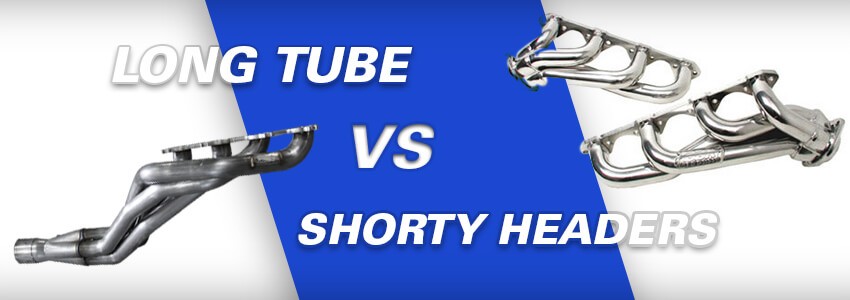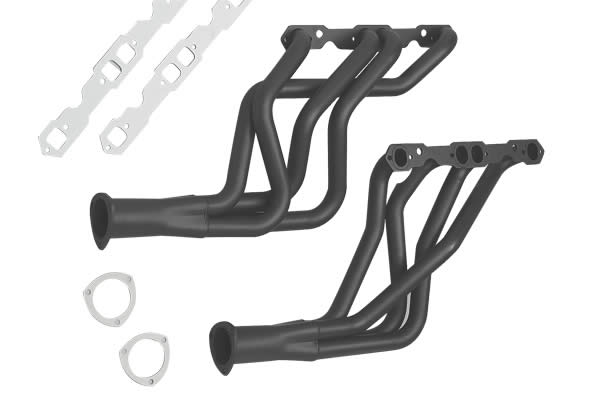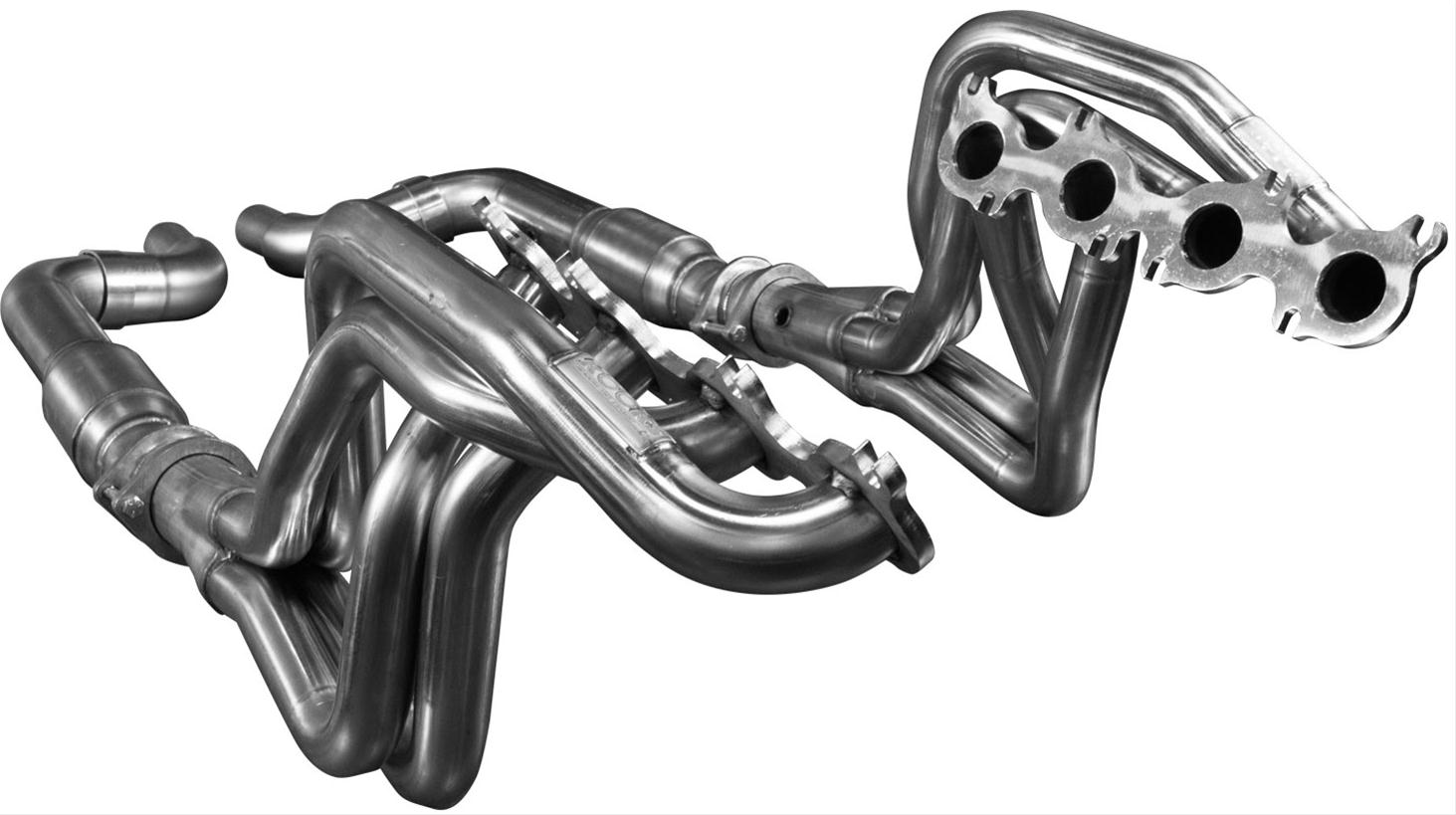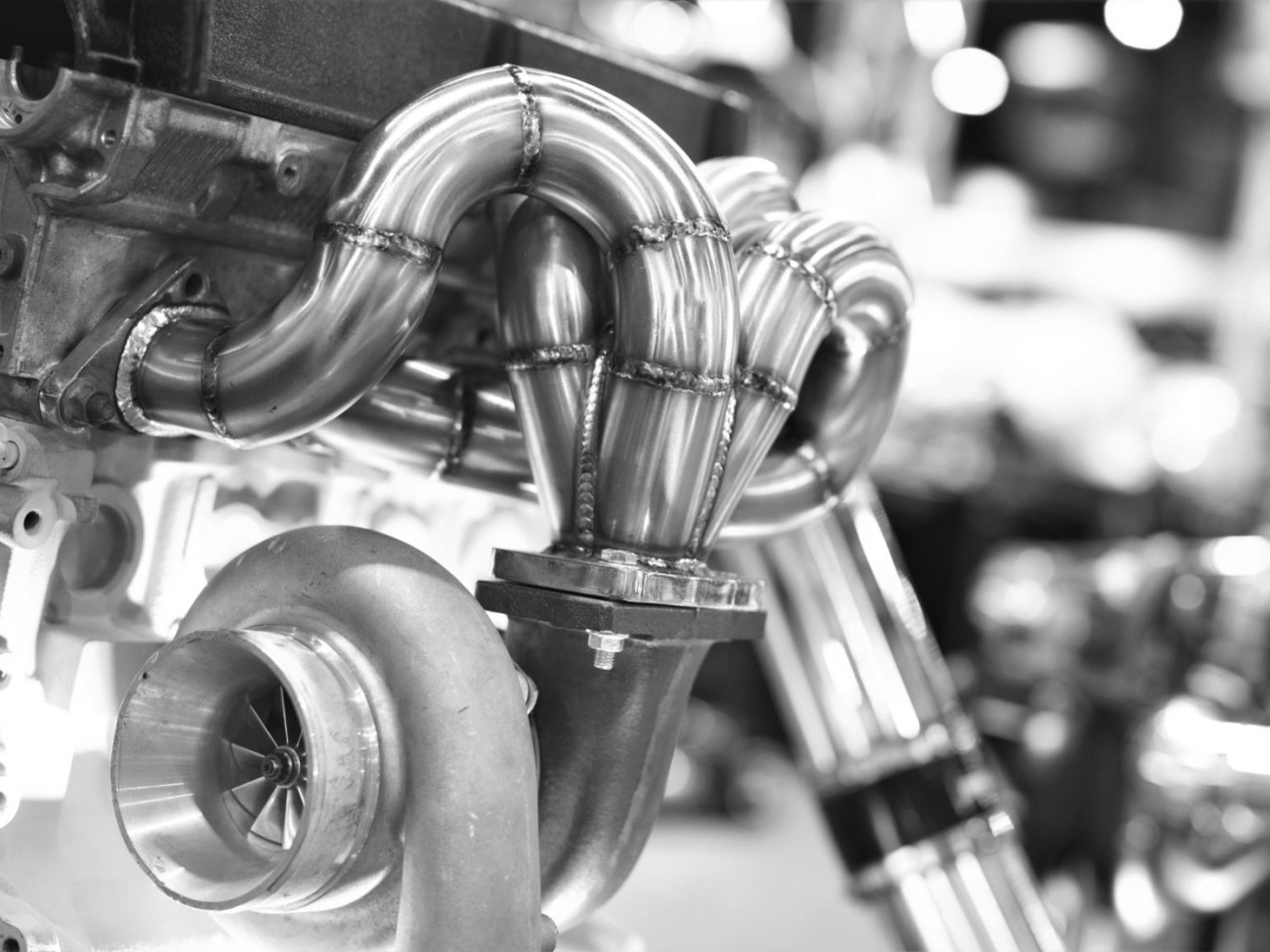Replacing exhaust manifolds with aftermarket headers can improve performance, but whether you want to go with long or short headers mostly depends on what you were looking at when building and what other options you have installed.
Understanding what these headers do and how their differences affect the horsepower and torque gains they can provide will allow you to choose the header that's best for you.

MANIFOLDS VS HEADERS
Although some people use the terms headers and manifolds interchangeably, they function differently.
Exhaust Manifolds
The exhaust manifold provides the "exhale" for the "inhale" of the intake manifold, just like it's hard for you to continue to inhale without exhaling, your car needs the same amount of exhaust as the engine inhales More. You can have an amazing hood scoop, cold air intakes, and intake manifold, but you're not optimizing your build without an equally powerful exhaust system.
Most exhaust manifolds are fairly small, with openings attached to each cylinder head, which then direct the exhaust to the catalytic converter, mid-pipe, and then into the rest of the exhaust system.
Since cracking is a common problem, the exhaust manifolds are thick in construction. Due to their thickness, the space in which exhaust gas can escape is more limited. This slows down the gas, creating back pressure and reducing engine performance. When the exhaust flow has to overcome resistance to leave the cylinder, it's called backpressure, and it quickly drains the engine of power.
Because they are restrictive, many drivers upgrade to aftermarket car headers for better performance.
Headers
Also known as "tubular manifolds" or "extractor manifolds, " depending on where you are, a header consists of a series of pipes that connect to each of your engine cylinders and help move exhaust gases out. While your stock exhaust manifolds are usually made of cast iron or stainless steel, headers can come in a variety of materials, and since stock manifolds tend to be utilitarian, header pipes can seem wild in comparison.
The headers go into an extension tube for each cylinder's exhaust gas, which relieves the back pressure created when all four cylinders are evacuated to the same space at the same time. Each individual tube then merges into a collector tube, but they all exit into the collector tube at different times due to the spacing of the tubes.

Essentially, the header acts as a guide, ensuring that each cylinder has a chance to use the header in turn, which helps prevent backpressure. This is how headers help improve performance.
The headers can be uncoated, painted, chromed, or ceramic coated. Ceramic-coated headers help keep headers clean and prevent rust and corrosion. They also keep the title cool. Chrome fittings can rust over time, depending on how they are used, and while stainless steel fittings are rust-proof, constant heat can turn them blue or brown in a short period of time. All three finishes have applications for which they are great, but ceramic coatings are the best choice for most people.
There are two main types of headers: Shorty and long tube.
SHORTY HEADERS
Short headers are probably inappropriately named because they are really just short compared to long headers. The short header still has longer tubes compared to your stock exhaust manifold.
You should still be able to use all the other components of the exhaust due to the shape of the short header, which makes the short header easy to modify.
If you're driving a turbo, you definitely need short headers, but they're also great for all kinds of other drivers. A short head is a good idea if you're looking to improve the performance of a vehicle that is primarily your daily driver or commuter.
And no matter what you're driving, the shorty header should be a huge step up from your existing exhaust manifold.
For short headers, another choice you need to make is whether to get unequal or equal length headers. Unequal-length headers provide deeper rumble and more low-end torque, but equal-length headers consistently provide greater performance gains.
LONG TUBE HEADERS
Long tube headers are best for rail cars or other machines that are at the higher end of the RPM range most of the time. Depending on the style of the long tube header, it may be necessary to relocate or unload the catalytic converter. This is one of the main reasons why long tube headers are often not legal in the fifty states. Another reason is sound.
While many enthusiasts love the sound of a long-pipe header-equipped exhaust, it's rarely a hit with neighbors. These headers tend to be very loud.
The installation of long tube headers can also be more challenging, as they may be too long to be used with the existing components of the exhaust.

INSTALLING SHORTY HEADERS VS INSTALLING LONG TUBE HEADERS
Installing Shorty is a great project that you can do in as little as an hour. The first step is to disconnect the car battery and lift your vehicle.
Once this is done, all you need to do is loosen the mid-pipe from the existing exhaust manifold and gently connect the headers. It s important to make sure everything is lined up before you start unscrewing the bolts. Then connect your new header to the mid-pipe.
It's that simple.
Because you don't have to offload the oxygen sensor or any of the more complex aspects of the exhaust system, the short header should take up roughly the same space as your previous exhaust manifold. After a short adjustment period, you need to retighten the nut, but other than that, nothing.
Long tube headers do require access to more complex aspects of the exhaust system. While the basic steps are similar to those encountered when installing short headers, there are a few additional steps that complicate the installation.
Short VS Long Fittings
At the end of the day, a short header is a great option for those looking for some extra performance from everyday driving or who are currently using a turbo. Due to the length of long tube headers, they tend to significantly increase turbo lag, which can negatively affect your performance if you use a turbo.
If you're looking to get a significant performance boost for your track day beast, long fittings may take longer to install, but they'll be the right long-term choice for you and your build.
Whether you're more interested in low-profile headers or long pipes, CJ has a variety of exhaust mods for your car.
Improving the exhaust manifold allows your engine to breathe better and thus perform better. Both long and short head headers are much better than your stock manifold, but what are the differences between these two header styles, and how to decide which header is right for your build.












